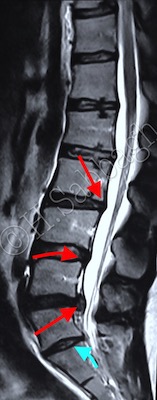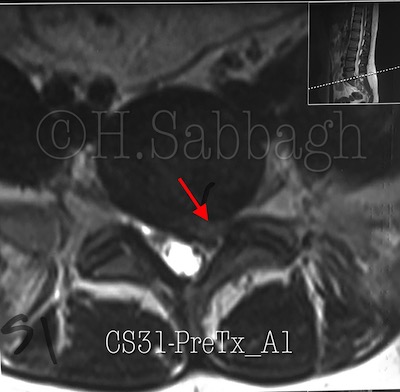Discussion
It is important to keep in mind that prior to admitting any patient for a treatment procedure, in addition to having a clear understanding of the specific clinical diagnosis, potential complicating issues must also be considered.
Some of the bio-mechanical factors such as congenital anomalies for example, can directly affect the treatment protocol, and the prognosis alike. To this, we can add patient’s expectation of the treatment results, not to mention clinicians expectations as well. It is important to keep reminding ourselves, that we are attempting to treat a whole person, with all the components that are specific to that individual, oppose to just a specific part of the spine.
Patient cases such as this, due to complicating bio-mechanical findings, require individually tailored treatment protocols. In-fact; no two cases respond similarly to a treatment procedures. This can be a challenging characteristic in itself, requiring a specific dynamic treatment applications.
It is also noteworthy that that Flexion/Distraction units regardless of the simplicity, are considered Chiropractic instruments, rather than a modality. This instrument, if utilized improperly, can in fact cause further complications. As such, every clinician who applies this instrument, must be certified in this area.
In regards to this specific patient case, there are a few important considerations which do requires further attention.
The morphology of the IVD structural pathology as seen on the pre-treatment MRI study revealed a L5-S1 sub-ligamentous herniation compromising the left lateral recess (Subacute Moderate Left S1 Radiculitis) superimposing a chronic degenerative discopathy with lobulated outer annular tear.
In addition; presence of a transitional segment, structural retrolisthesis of L5, and reversed lumbar lordosis with upper segments involvements, further complicated the treatment procedure.
Therefore; the following considerations in applying the DPPP-SAA treatment protocol were implemented.
The initial treatment phase involved the following criteria:
LF – 1/27 sec/int
DA -4.8 deg max
AFP/PFP full cephalic
ASA – 13.4 deg
AT 0/11 static
LB 0/25 static
AR 0/45 static
The axial mode along the Y-axis, and around the X-axis must be applied cautiously until meaningful reduction of the radiculitis is reached. Presence of a transitional segment, and the L5 structural retrolithesis significantly reduces safe decompression range beyond the fore-mentioned criteria. Furthermore, caution must be exercises to avoid retro-distraction of theL4-5 segment which had presented with retro-discopathy.
Of course, in order to reach maximum decompression result, the values must be adjusted accordingly. The decompression ratios do not follow a linear pattern, nor a fixed ratio, they are highly dynamic even in a single treatment session.
The treatment protocol must be designed to achieve the following sequential results. Relieve or reduction of the radiculitis (Sub-articular Space), decompression of the the most recent central outer annular tear, followed by pelvic stabilization. No form of direct manipulation is indicated in this or similar cases. Attempts to improve the CG dynamics, can contribute to pelvic stabilization, as well as to help prevent degenerative retrolisthesis regression(upper segments).
The process of pregnancy and giving birth can introduce significant bio-mechanical load changes, altering the normal static as well as coupled motion. Pre pregnancy bio-mechanical analysis even in asymptomatic patients has proven to be beneficial, and considered mandatory in patients with history of bio-mechanical disorders such as this particular case. Furthermore; postpartum follow up should also be considered in patients with higher risk factors.
There is no doubt that conservative treatment of bio-mechanical disorders should be considered as the first line of treatment option, if the clinical presentation allows.
It should be emphasized that the presence of IVD structural pathology is not necessary a progressive condition. It can in fact be treated successfully, and managed in the long term, with an acceptable prognosis.
H. Sabbagh, D.C.
Published: July 12, 2023

